
 |
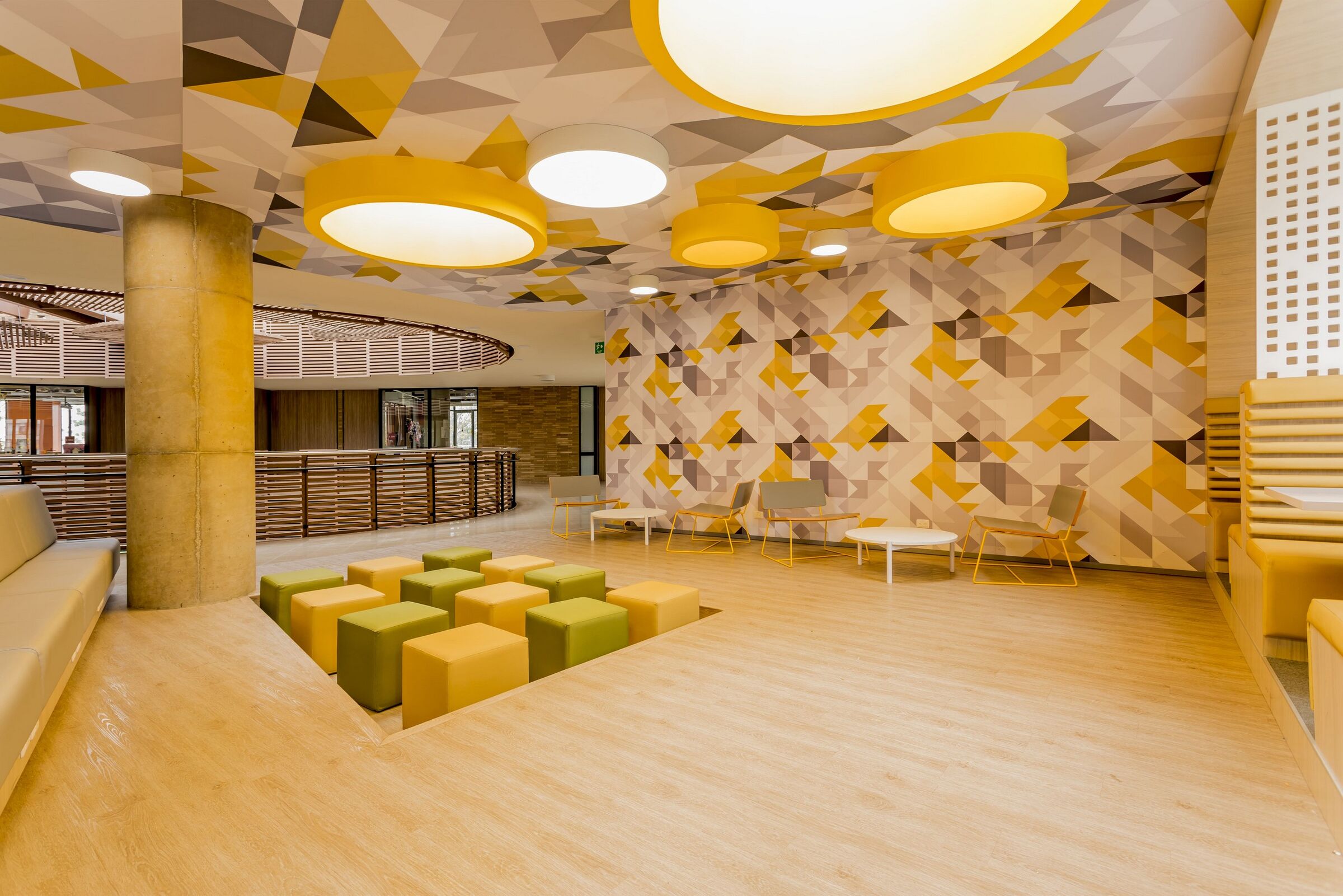 |
 |
Taller de Arquitectura de Bogotá as Architects-EUREKA CENTRE
겉과 속은 다른 공간감과 건축모습을 보여준다. 뾰족뾰족한 방향성을 갖는 외형과 달리, 내부는 부드러운 곡선으로 이루어진 열린 공간을 구현한다. 캠퍼스 내 학생들의 다양한 소통을 위한 중정으로 제공된다.

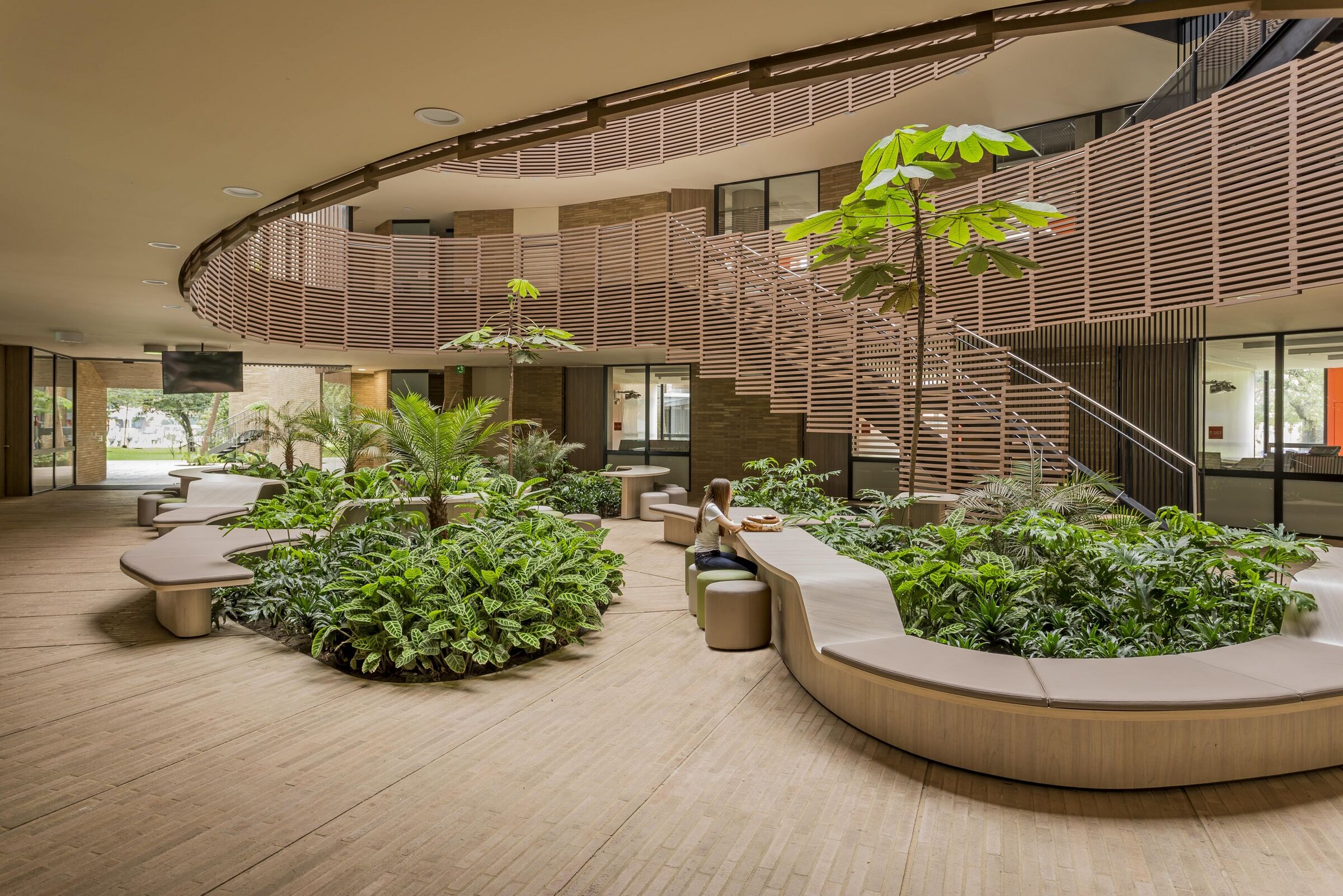








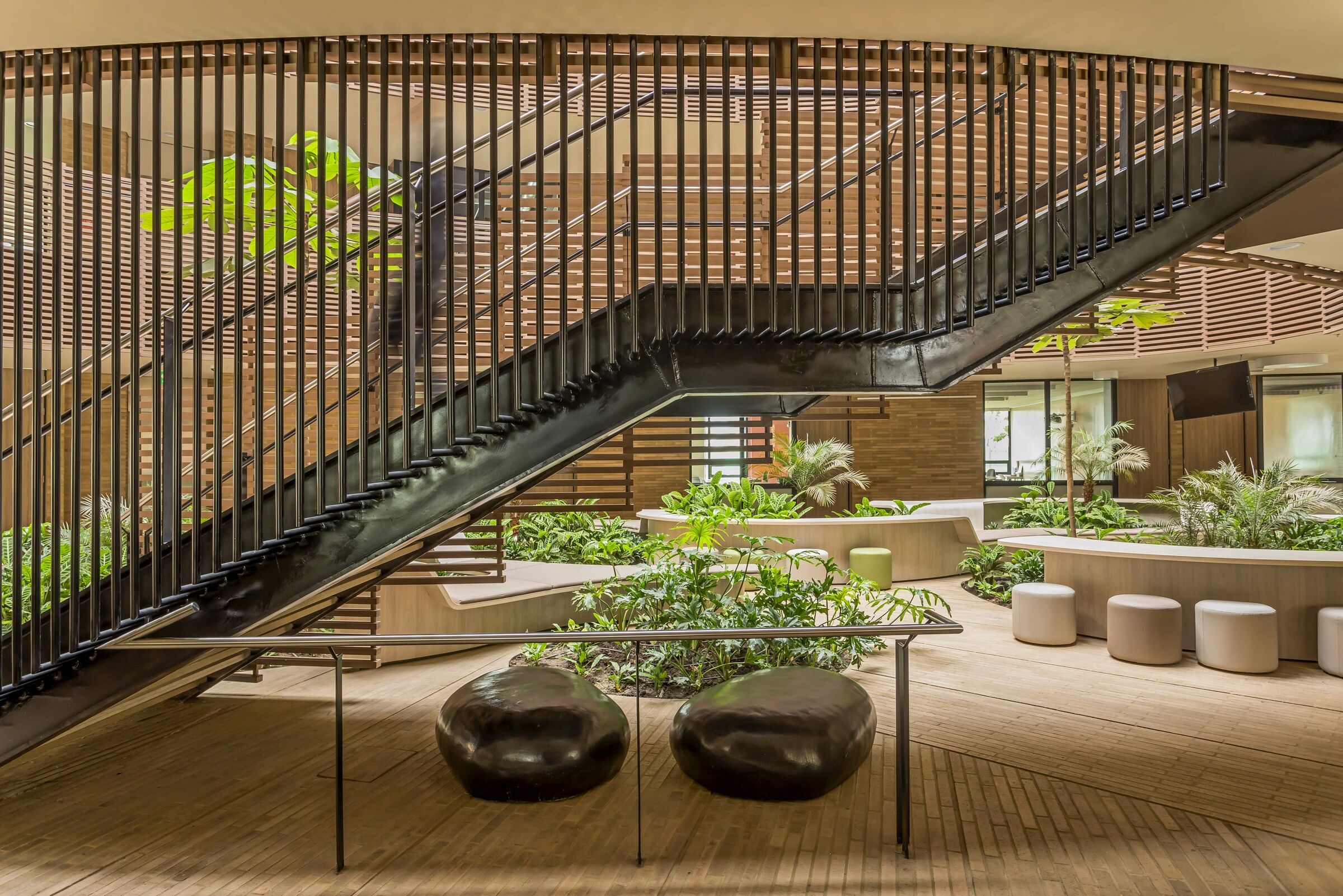


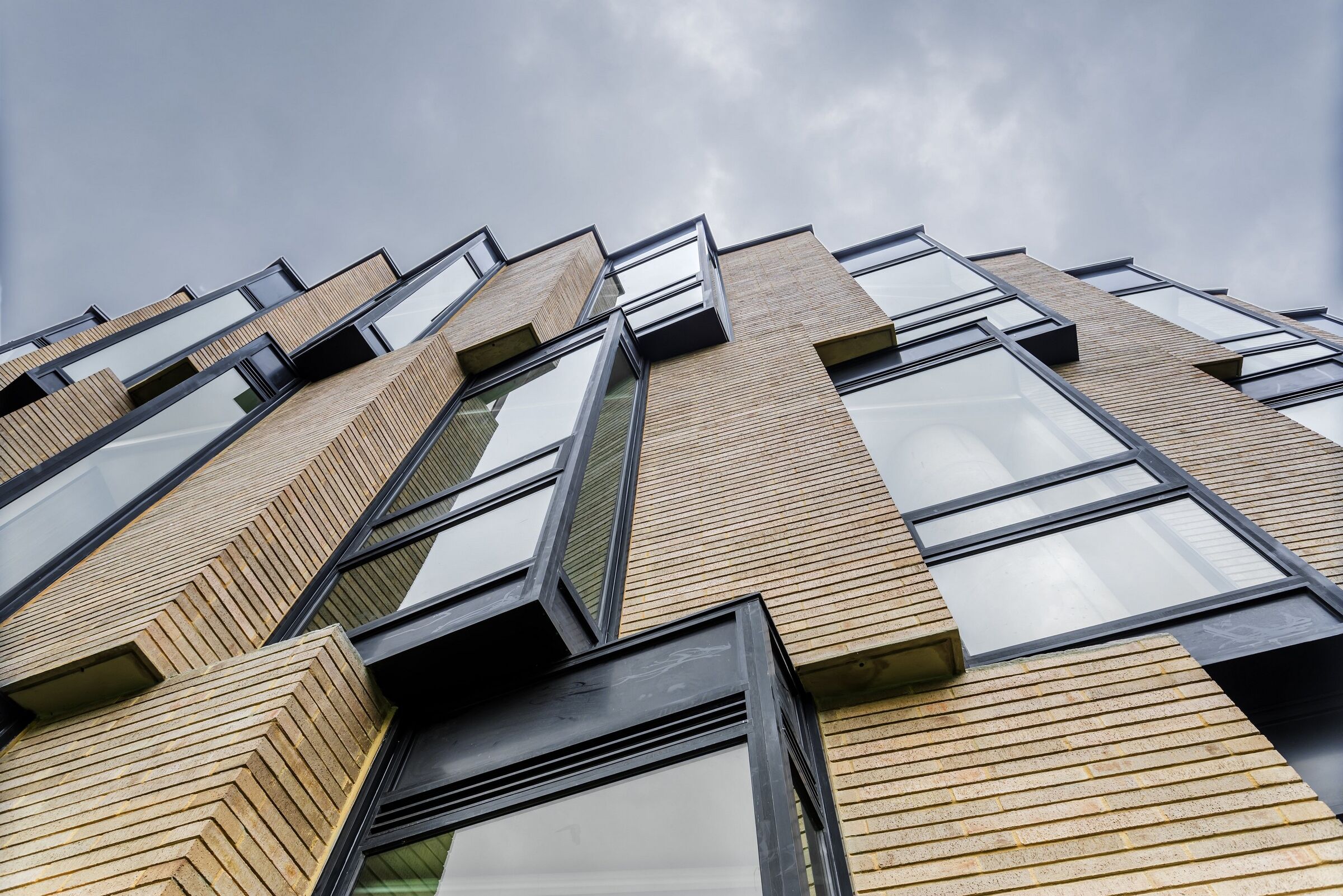

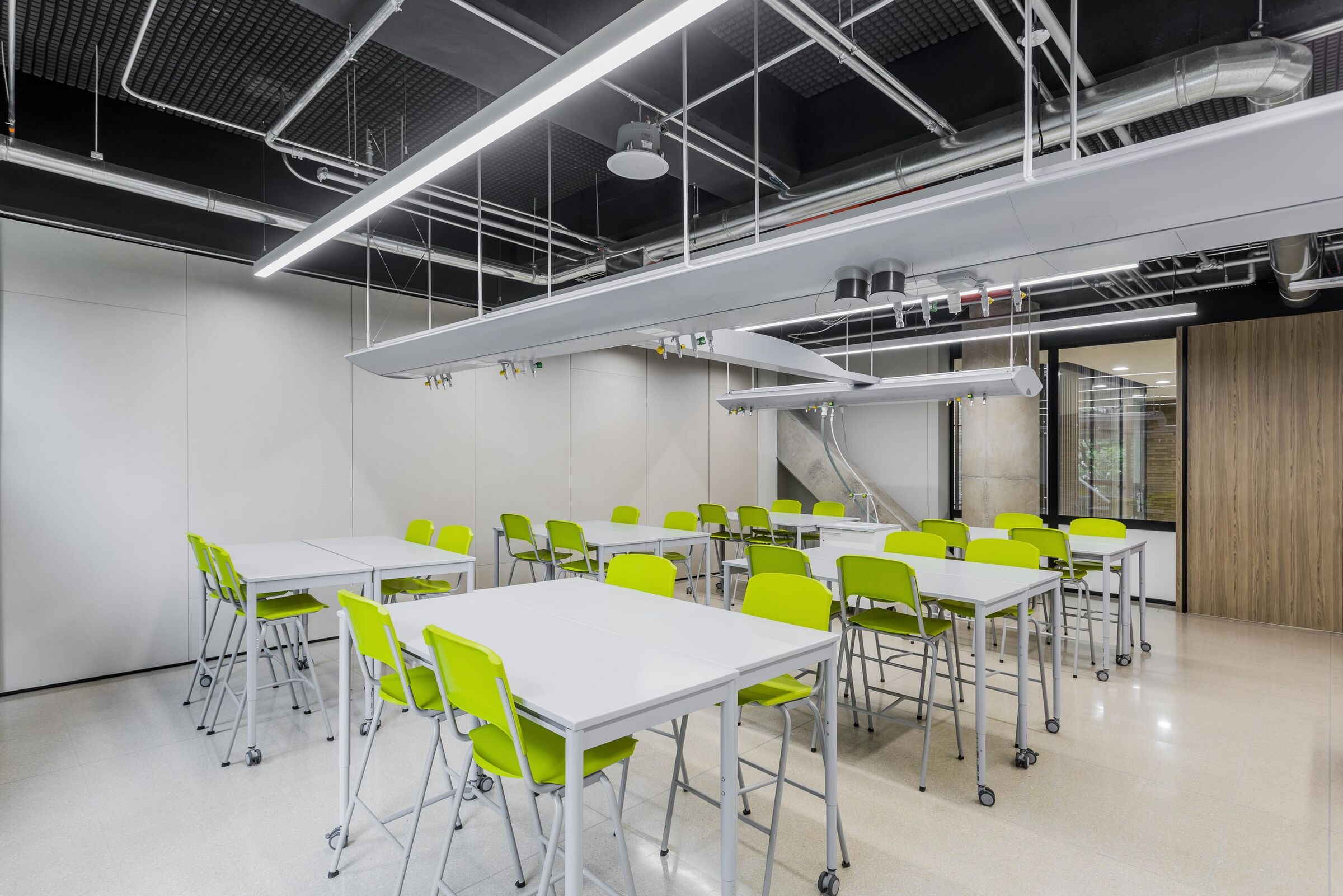

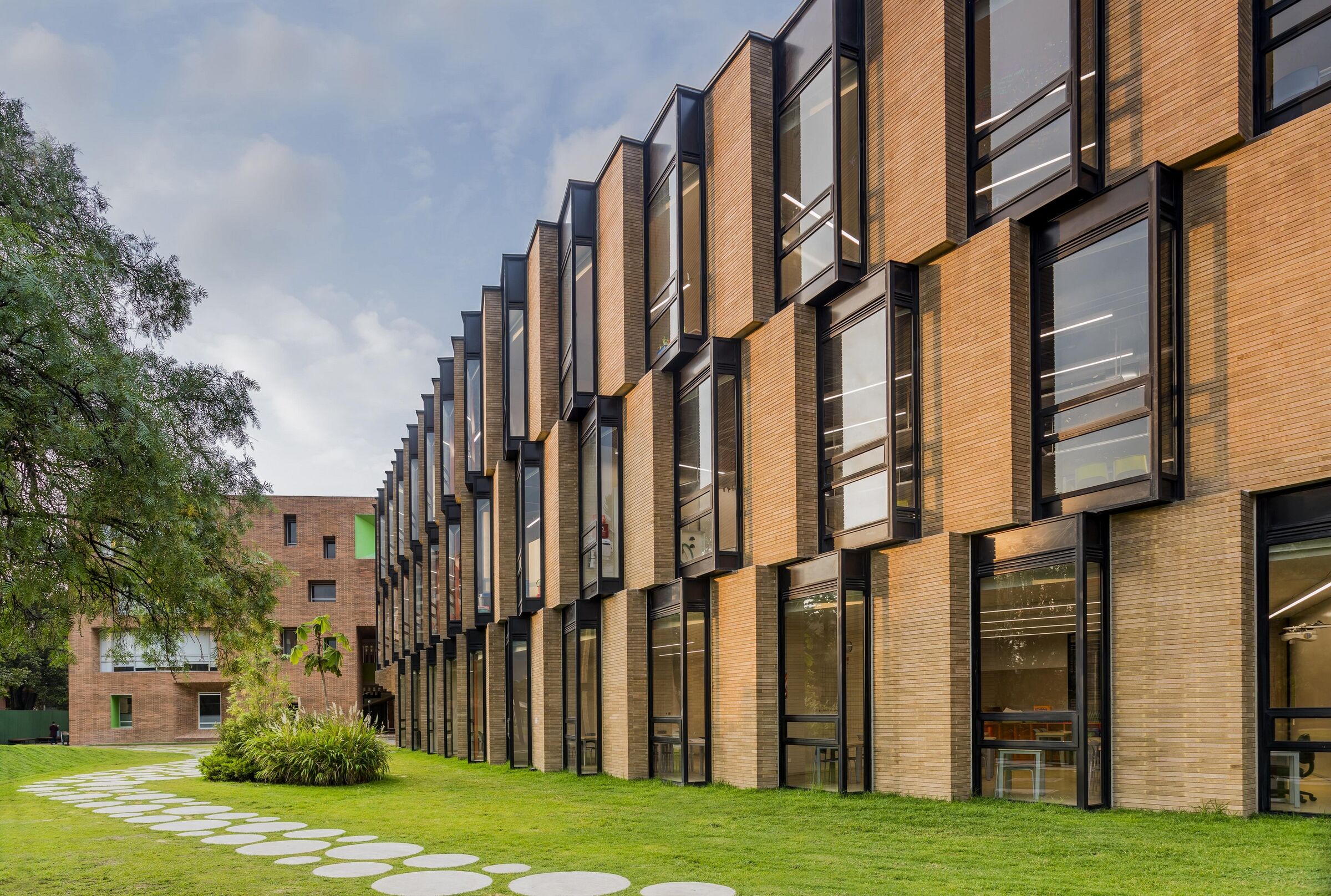
The design of the Eureka Centre Building for the Anglo Colombian School performs as a common ground where research, experimentation, the search for ideas and learning processes, among others, come together in a cyclical system of learning; hence, the concentric construction that surrounds them.
The proposed building, defined by two opposing half moons, generates a composition of independent elements that read as an entity, even when the ends of them do not formally coincide. The composition emerges from the premise of generating access thresholds at the ends of the concentric shapes while simultaneously allows the "green" in, and consequently the public activities achieve to actively penetrate the building.
The two half moons slightly separated among each other, define a longitudinal axis which at ground floor level generates access points to the building. These entrances are formally highlighted with a particular gesture through two large overhangs provided in opposite positions at each end of the longitudinal central axis. As a result, the areas planned under these protrusions act as open while also become protected spots from the rain, and attached to the abundant landscaping of the surrounding campus.
Futherome, the two clay half-moons, embrace a central forest like courtyard with an "oval" configuration in the form of a leaf; where you can see and mix all of the activities that come together at the perimeter of the oval courtyard. The kinetic form of the patio, in contrast to the static cubic blocks of the rest of the School, allowed us to give a special image to the research within the building complex.
Instead of the most basic idea of having an orthogonal laboratory building, we decided to work on an oval shape, such as the ones seen within nature itself; as an analogy to the galaxies and planets surrounding the universe. An analogy of this kind allowed us to define a concentric based relationship, where all the parts surrounding the centre become an active part of the complex; where different fields of knowledge in this case become the entity of our building,
Furthermore, a concentric functional system achieves spontaneous encounters for the students, whom by walking around endup facing different fields of knowledge, that can then attract them and also generate interest. The shape of the building and its functional principle performs as an exhibit itself, where the classrooms and events happening around are visible due to the transparency provided on the materials; this enhances the possibilities of seeing and be seen, of sharing the work and create enthusiasm on others with your results.
As a result of the concentric functional approach, the central space plays a fundamental roll, not only because it carries the circulations along it's perimeter, but also because it promotes informal areas along it's course, where encounter and interchange happens as a result.
The central space is therefore the main building articulator, connecting the different floor plans via a “helical” system of circulations ending at the student lounge at the top floor plan and afterwards, connecting onto the building terrace which performs as an additional academic area, where students can research about climatic conditions of the surroundings and develop further educational activities.
On the other hand, the classrooms foreseen in the perimeter of the "oval" patio, get interconnected via the “helical” system of circulations. The building contains areas for mathematics, chemistry, physics and technology among other fields of knowledge; given the variety of the tasks to be developed within the building, a laboratory technological feature called “none-fixed pipe” was introduced.
The labs implemented with flexible furniture and service wings overhanging, allowed us to achieve maximum capacities to develop programs and variable tasks in time. The technology that was implemented grants total flexibility given that there are no fixed stations nor fixed services. The service wing acts as a technological main road that allows connectivity throughout the rooms, it even allows to provide and also drain water trough the laboratories.
In terms of materiality, the proposal for the Eureka Centre facilitated the articulation of the building to the whole complex through the implementation of the same predominant material in the School, clay. However, the formal composition of the building, different from the orthogonal buildings of the surroundings was enhanced through the implementation of a façade in serrated brick. This allows the marked breakages to solve, in a fluid way, the materiality of the curve and at the same time the implementation of the windows on right angles, which when the puzzle pieces are connected solve the sinuous
from archello
'Culture' 카테고리의 다른 글
| *퍼블릭 스위밍 풀 리노베이션 [ RAUM ] Public Swimming Pool & Spa Renovation in Britanny (12) | 2023.06.02 |
|---|---|
| *지엘에이 컨벤션 홀 [ Waro Kishi + K. Associates ] GLA Chukyo Hall (12) | 2023.05.24 |
| [ Design, Bitches ] Button Mash (12) | 2023.05.17 |
| *라리베라 컬쳐센터 [ ARS° Atelier de Arquitecturas ] La Ribera Center for Culture and Arts (12) | 2023.05.15 |
| [ OPEN Architecture ] Shanfeng Academy (0) | 2023.05.11 |